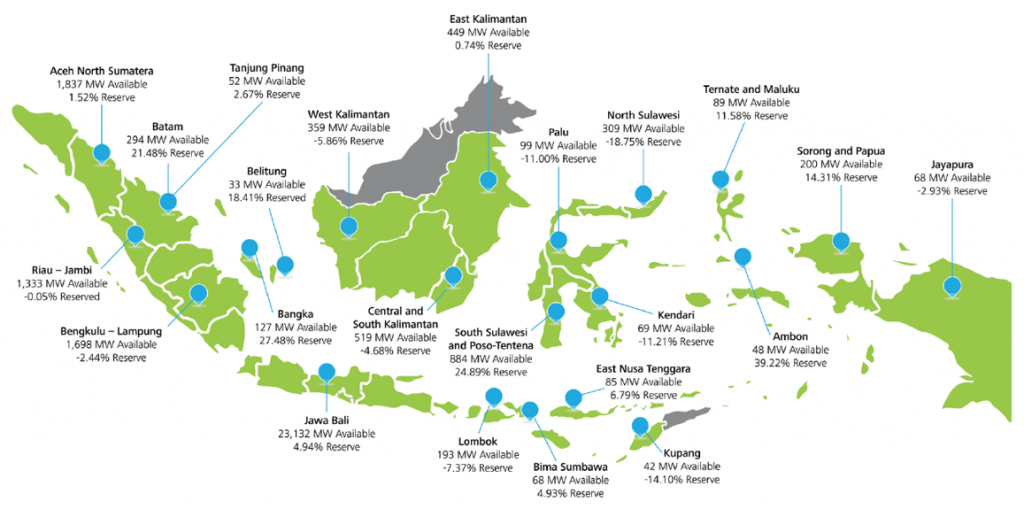As Indonesia is an archipelago consisting of thousands of islands, there are hundreds of standalone electricity networks that are operated by state-owned electricity utility PLN (or its subsidiaries).

The largest of these networks is the Jawa-Madura-Bali system that spans across the islands of Jawa, Madura and Bali and has over 35GW of installed generation capacity. The Sumatera interconnected system is next with over 8.5GW of installed capacity, although it is normally operated as two separate systems. The South Sulawesi and South, Central and East Kalimantan systems are also relatively large (>1GW), after which the grid capacities drop off rapidly.
The following list shows the largest contiguous systems by peak load (based on RUPTL 2017-2026):
| Grid / System | Location | Peak Load (MW) |
| Jawa-Madura-Bali | Java, Madura and Bali islands | 26,646 |
| Sumatera Bagian Selatan & Tengah | South and central Sumatera | 3,582 |
| Sumatera Bagian Utara | North Sumatera and Aceh | 2,388 |
| Sulawesi Bagian Selatan | South Sulawesi and Palu | 1,452 |
| Kalimantan Selatan, Tengah & Timur (*) | South, central and east Kalimantan | 981 |
| Batam | Batam, Riau Islands | 392 |
| Sulawesi Bagian Utara | North Sulawesi and Gorontalo | 364 |
| Kalimantan Barat | West Kalimantan | 306 |
| Lombok | Lombok, Nusa Tenggara Barat | 248 |
| Bangka | Bangka, Bangka Belitung | 144 |
| Timor | Timor, Nusa Tenggara Timur | 108 |
| Kendari | Southeast Sulawesi | 83 |
| Jayapura | Papua | 83 |
| Ambon | Maluku | 67 |
(*) Note that the interconnection between the Kalimantan Selatan & Tengah (Kalselteng) and the Kalimantan Timur (Kaltim) systems is currently under construction and expected to be finished by the end of 2017.
In the next series of articles, we will profile each of these major grids in more detail, describing their unique characteristics and energy mixes.
